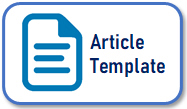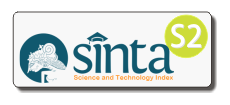Literature Survey on Islamic Microfinance
DOI:
https://doi.org/10.14421/grieb.2020.081-03Keywords:
Islamic Microfinance, Microfinance, Micro-Credit, and Islamic Finance.Abstract
Islamic microfinance can be seen as an emerging industry in some Muslim countries like Indonesia, Malaysia, Pakistan, Bangladesh, and MENA regions. It acts as a movement to eradicate poverty in the society and to help improve the social standard of the poor people. The concept of Islamic microfinance is similar to those implemented in conventional microfinance except for it adheres to several points and concepts which in line with the Shariah rulings. As a growing industry, Islamic microfinance does facing several challenges such as limited outreach in the market, lack of expertise in the industry, governance and management problems, and many more. Hence, this paper will discuss further the issues and challenges faced by Islamic microfinance institutions in selected Muslim countries. Plus, some suggestions are given at the end of this paper to solve these issues.
Downloads
 Abstract viewed: 2454 times
|
Abstract viewed: 2454 times
|
 PDF downloaded = 1942 times
PDF downloaded = 1942 times
References
Abid, A., & Shafiai, M. H. M. (2017). Islamic microfinance for rural farmers: A proposed contractual framework for Amanah Ikhtiar Malaysia. Jurnal Hadhari, 9(1), 33-47.
Akhter, W., Akhtar, N., & Jaffri, S. K. (2009). Islamic micro-finance and poverty alleviation: A case of Pakistan. Proceedings of the 2nd CBRC. https://akhuwat.org.pk/islamic-micro-finance-and-poverty-alleviation-a-case-of-pakistan
Alshebami, A. S., & Khandare, D. M. (2015). Islamic microfinance industry in Yemen: Challenges and opportunities. International Journal of Societal Work, 2(2), 1-9. https://doi.org/10.5296/ijsw.v2i2.7937
Al-Mamun, A., Wahab, S. A., & Malarvizhi, C. A. (2010). Impact of Amanah Ikhtiar Malaysia's microcredit schemes on microenterprise assets in Malaysia. International Research Journal of Finance and Economics, (60), 144-154. https://doi.org/10.2139/ssrn.1946089
Aslam, M. N. (2014). Role of Islamic microfinance in poverty alleviation in Pakistan: An empirical approach. International Journal of Academic Research in Accounting, Finance and Management Sciences, 4(4), 143-152. https://doi.org/10.6007/IJARAFMS/v4-i4/1288
Dhaoui, I. (2015). The role of Islamic microfinance in poverty alleviation: Lessons from Bangladesh experience (MPRA Paper No. 87358). https://mpra.ub.uni-muenchen.de/87358
Haneef, M. A., Pramanik, A. H., Mohammed, M. O., Amin, M. F. B., & Muhammad, A. D. (2015). Integration of waqf-Islamic microfinance model for poverty reduction: The case of Bangladesh. International Journal of Islamic and Middle Eastern Finance and Management, 8(2), 246-270. https://doi.org/10.1108/IMEFM-03-2014-0029
Hassan, S., Rahman, R. A., Bakar, N. A., Mohd, R., & Muhammad, A. D. (2013). Designing Islamic microfinance products for Islamic banks in Malaysia. Middle-East Journal of Scientific Research, 17(3), 359-366. https://doi.org/10.5829/idosi.mejsr.2013.17.03.12160
Hossain, B. (2019). Islamic microfinance and rehabilitation model for the slum and floating population by waqf funds, the case of Bangladesh: A proposal for muslim countries. Journal of King Abdulaziz University, 32(2), 139-160. https://doi.org/10.4197/Islec.32-2.11
Jaelani, A. (2016). Zakah management for poverty alleviation in Indonesia and Brunei Darussalam. Turkish Economic Review, 3(3), 495-512. https://doi.org/10.1453/ter.v3i3.843
Kagan, J. (2019, August 3). Microfinance. Investopedia. https://www.investopedia.com/terms/m/microfinance.asp
Karim, A. (2012). Global Islamic Microfinance Landscape. Global Islamic Finance Report. http://gifr.net/gifr2012/ch_25.pdf
Nawai, N. B., & Bashir, M. S. (2009). Evaluation of micro credit program for poverty alleviation: A case of Amanah Ikhtiar Malaysia (AIM). http://ddms.usim.edu.my/bitstream/123456789/1555/1/IRSA%202006.pdf
Nugroho, L. (2014). Challenges sharia microfinance institutions: Evidence from Indonesia. European Journal of Islamic Finance, (1), 1-6. https://doi.org/10.13135/2421-2172/793
Morduch, J. (2009). The microfinance schism. In D. Hulme, & T. Arun (Eds.), Microfinance: A reader (pp. 17-35). Routledge Taylor & Francis Group. https://doi.org/10.4324/9780203882764
Otero, M. (1999). Bringing development back, into microfinance. Journal of Microfinance, 1(1), 8-19.
Rahman, A. R. A. (2010). Islamic microfinance: An ethical alterntive to poverty alleviation. Humanomics, 26(4), 284-295. https://doi.org/10.1108/08288661011090884
Rahman, M. M., Khanam, R., & Nghiem, S. (2017). The effects of microfinance on women’s empowerment: New evidence from Bangladesh. International Journal of Social Economics, 44(12), 1745-1757. https://doi.org/10.1108/IJSE-02-2016-0070
Rokhman, W. (2013). The effect of Islamic microfinance on poverty alleviation: Study in Indonesia. Journal of Economics and Business, 11(2), 21-30.
Saad, N. M. (2012). Microfinance and prospect for Islamic microfinance products: The case of Amanah Ikhtiar Malaysia. Advances in Asian Social Sciences, 1(1), 27-33.
Seibel, H. D. (2008). Islamic microfinance in Indonesia: The challenge of institutional diversify, regulation, and supervision. SOJOURN: Journal of Social Issues in Southeast Asia, 23(1), 86-103.
Siwar, C., & Talib, B. A. (2001). Micro‐finance capacity assessment for
poverty alleviation: Outreach, viability and sustainability. Humanomics, 17(1), 116-133. https://doi.org/10.1108/eb018864
Sudirman. (2016). Implementing “zakat” – Based microfinance in Indonesia. IOSR Journal of Economics and Finance, 7(5), 57–61. https://www.doi.org/10.9790/5933-0705025761
Wilson, R. (2007). Making development assistance sustainable through Islamic microfinance. IIUM Journal of Economics and Management, 15(2), 197-217.
Downloads
Published
Issue
Section
License
Global Review of Islamic Economics and Business is licensed under a
Creative Commons Attribution-ShareAlike 4.0 International License



















